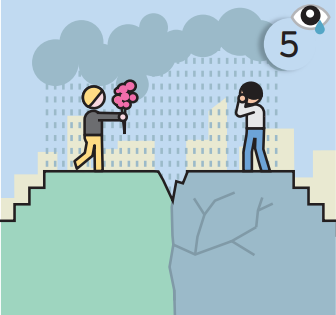Station 5: Remorse and Affection
«But I love you.» After the violence comes remorse. Acts of violence are often excused by external circumstances: stress, financial or work problems, jealousy, or alcohol.
The abusive person becomes particularly loving again, apologizes, shows great remorse, and promises to change. This rekindles hope for the victim. It feels as though things are getting better – until the cycle repeats itself.
In an abusive relationship, phases of violence, reconciliation, remorse, and escalation follow one another. Unfortunately, violence is often not an isolated incident: over time, the intervals between violent episodes shorten, and the severity of the violence increases.
This cycle of violence, remorse, and reconciliation – also known as the cycle of violence – makes it difficult for victims to leave the relationship. This is compounded by the so-called « honeymoon phase » following the remorse, during which love and hope for change are reignited.
Leaving is often challenging, as many victims only become fully aware of their difficult situation much later. Patterns of violence develop gradually, and emotional abuse is particularly hard to identify.
That’s why it’s crucial to recognize the warning signs.
Continue to Station 6: «Recognizing Warning Signs».



